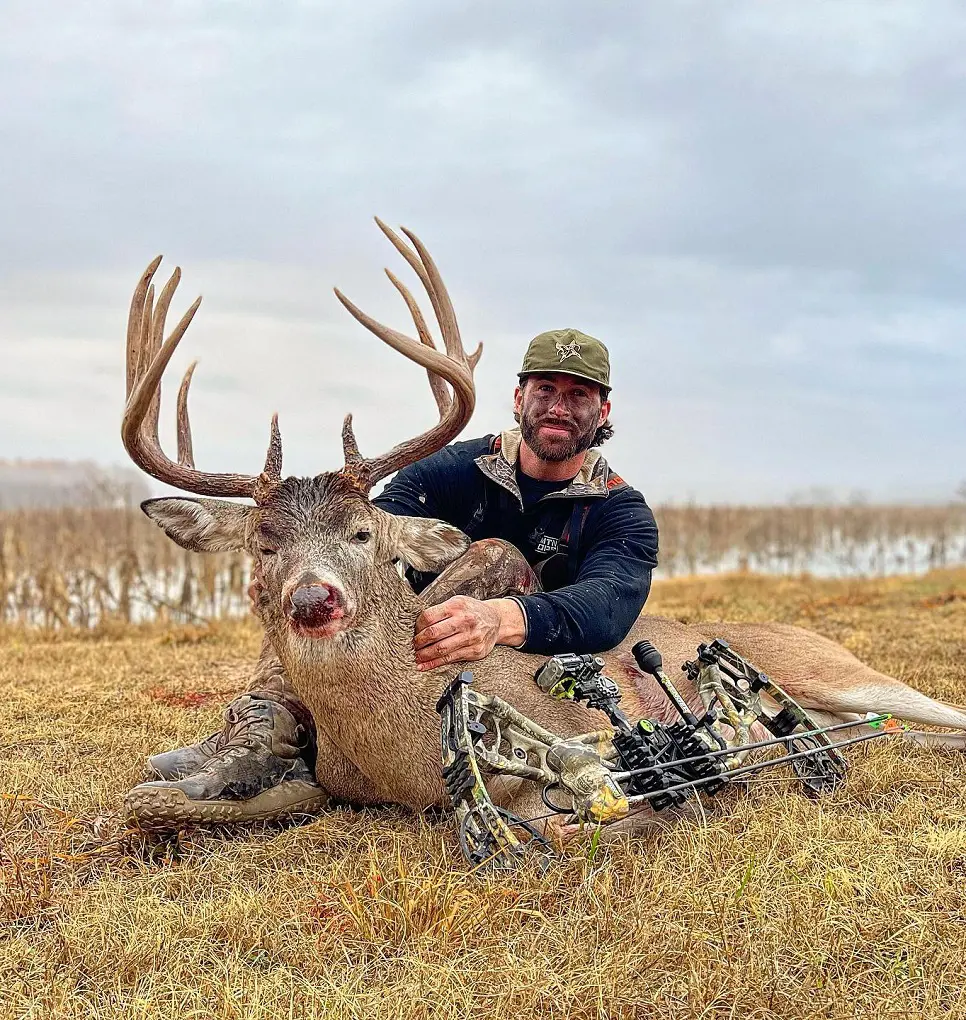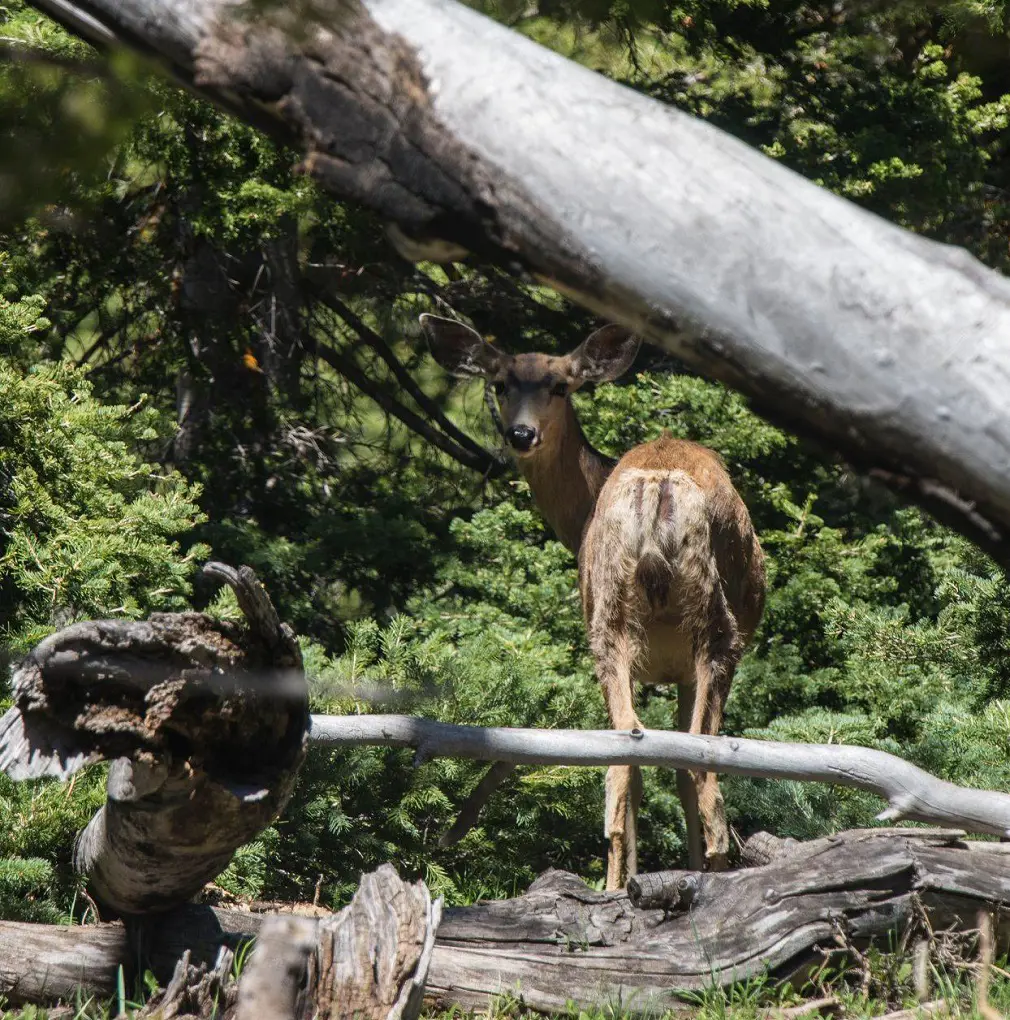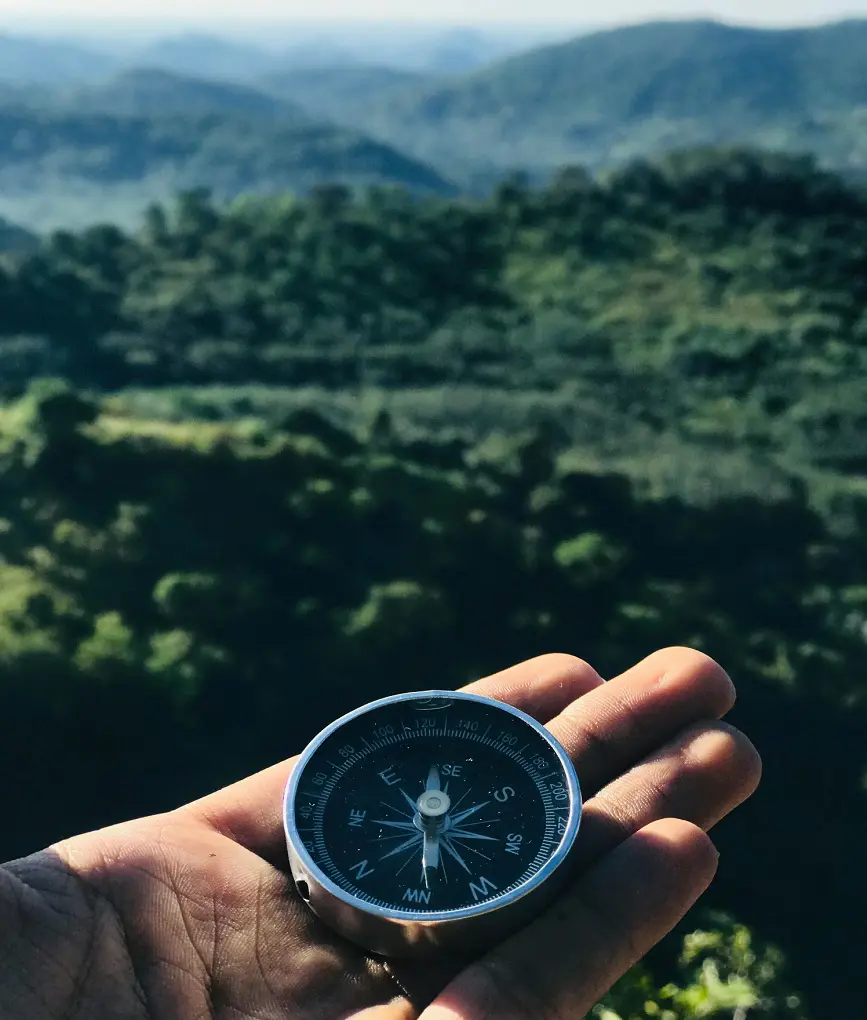Deer droppings, commonly known as deer scat or feces, differ in appearance based on the deer's food as well as their age. Deer droppings range in color from dark brown to black. Thus, their nutrition influences the color of the deer. Fresh droppings are darker, however older ones may fade to a lighter brown with time.
Finding, identifying, and understanding deer scat is one of the most effective methods to learn about how deer use a particular area. Hence, observing deer scat can assist adventurers in tracking the movements of deer and other creatures that may feed on or compete against them.
Appearance of Deer Droppings
Deer droppings often look like tiny, black, cylindrical pellets and are occasionally mistaken for rabbit droppings. On closer analysis, individuals can typically distinguish between rabbit and human waste because of their noticeable size difference. Apart from little droppings, deer also leave behind substantial scats of clumped pellets.
They are dark in color and have a length of more than an inch. Because of the structure and function of the deer's colon, deer droppings pellets are extremely tiny. The sphincter of a deer's colon opens and closes in a roundish. The deer colon's sphincter produces little, spherical pellets because of how it works. Similarly, certain other animals (such as sheep, goats, and rabbits) also excrete.
Some characteristics of Deer Poop are:
- Shape: oval-shaped pellets
- Color: Brown and Black
- Individual Pellets Size: .2 to .5 inches in length
- Appearance: Fresh deer poop is shiny, and moist look (the amount of water in the diet determines how moist or fibrous the poop is), Pellets are consistent in appearance and do not appear to contain any food.
Drier scats will have the appearance of a spilled bag of chocolaty looks, but moister scats may contain pellet clusters compressed together by the digestive system.
Color Variations in Deer Poop

The color of deer poops can range from dark brown to nearly black as the color is influenced by what they consume. Fresh droppings are darker than older ones, which may fade to a lighter brown after some time.
- Dark Brown to Almost Black: Fresh deer droppings are often dark brown to nearly black. This is especially apparent when deer feed on woody browse and tannin-rich plants.
- Lighter Brown: As deer droppings epoch and dry, their hue may lighten to a medium to light brown. Sunlight and weathering might also cause this color shift.
- Green: During the spring and summer time, when deer have access to refreshed green flora, their droppings may have green stuff, making them look greener. This is the effect of the deer's diet.
- Reddish Tinge: Sometimes you'll find a reddish tint in deer droppings. This might be due to the deer's consumption of some fruits, berries, or other foods containing red pigments.
Factors That Influence The Color
The color of Deer-dropping is also influenced by other factors, such as general health as well as hydration. Dehydrated deer may create darker, tougher pellets in their droppings, whereas well-hydrated deer may produce somewhat lighter, softer droppings. The rate at which the excrement dries and turns black can also be influenced by external elements including humidity and temperature.
Older droppings eventually dry up and lose their black hue, while fresh ones are often glossy and wet. Deer poop color can give information about the nutrition, season, and recent visitation history of a given area.
Seasonal Changes in Deer Feces
The feces of deer change seasonally, when deer feed on fresh foliage in the summer and spring, their excrement may seem greener, reflecting the plants' high moisture and nutritional content.
Deer start consuming acorns, nuts, and other hard mast as fall approaches; this causes their pellets to become denser, drier, and darker. Because the food is less water-rich during this period, the diet adjustment results in firmer droppings.
Furthermore, eating fibrous plant materials such as bark and twigs during the cooler winter months produces smaller, tougher, and drier droppings that are usually dark brown to almost black.
Differences Between Male and Female Deer Poop

It's almost near to impossible to tell whether a large and tubular poop belongs to a buck (male) and small, pelleted poop belongs to a doe (female), but it is believed so, which is unlikely to be true. Also, studies reveal that hunters are unable to differentiate between the feces of buck and doe, as both scat forms are produced by both sexes.
Bucks may, but may not always, have lengthier stool pieces as compared to tubular scat. A deer's sex cannot be determined only by its scat form; you must also check the deer that dropped it.
However, compared to female deer, male deer might produce more pellets. Comparing pelleted scat, a buck typically dumps 70 to 80 every session while a doe produces just around 50 to 60.
Whitetail Poop vs. Mule Deer Poop
The main distinction between whitetail and mule deer excrement is what it is composed of. Aside from its contents, mule deer scats and whitetail deer scats are very similar in appearance. Whitetails and mule deer rarely share habitat, however, their ranges do overlap in portions of the West and Southwest.
Mule deer and whitetail deer have quite varied diets since they reside in different sites. While whitetails in the eastern United States eat more lush, temperate-climate forbs and browse, mule deer in the West and Southwest are better adapted to a shrubby diet.
Hence, this means that a regular mule deer scat from the Mountain West or Southwest may contain less moisture than a standard whitetail scat from eastern Pennsylvania. But since the temperature is also drier, the scat dries out faster in the West and Southwest than it would normally in a more humid climate.
Deer Poop Look-Alikes
Whether you want to be a fine rifle hunter or learn how to bow hunt deer, scat identification is vital for determining where deer spend their time. Other animals leave similar droppings, which can be mistaken for deer scat. This includes some of the following:
- Rabbit scat: It is often a mound of spherical, brown pellets, whereas pellets of deer are a bit more oval. Individual pellets can be measured according to rabbit species .5 inches or less in diameter.
- Bear Scat: Bear scat is generally a much larger and less-formed pile. The scat will be 5 to 12 inches long and 1.5 to 2.5 inches broad if it has a little tubular form. In the scat, look for a variety of food items including litter, nut shells, fruit pits, hair, and human food.
- Pronghorn Scat: Compared to a pile of deer pellets, pronghorn scat is often rounder but may also have a more asymmetrical form. They tend to be about and may have a chocolate chip appearance .2 inches across.
- Elk Scat: It appears like a bigger version of ordinary deer pellets. Check for consistent pellets with a diameter of between .4 and .5 diameter.
- Moose Scat: Moose scat is not to be mistaken for deer pellets; it is much larger than elk scat. In the winter, it's less moist and appears as pellets, but as it greens up, it resembles a little cow pie. Look for pellets with a diameter of at least .75 inches.
The Role of Deer Poop in Tracking and Hunting

For hunters, deer poop is an invaluable resource since it offers crucial hints regarding the behavior, habitat preferences, and travel patterns of deer. Also, it is an excellent predictor of the areas where deer spend a significant portion of the day or night. Furthermore, if you notice more of this deer indicator in a certain area, the herd is probably congregating there.
- It Serves as an Indicator of Deer Presence: One of the most obvious signs of deer activity in an area is deer poop or excrement. Hunters can determine if a site is worth exploring or hunting further by using fresh droppings, which indicate the presence of deer in the area.
- Tracking of Movement Patterns: Hunters can trace the movement patterns of deer by tracking a deer scat trail. Along travel routes that lead to feeding or watering places, such as game trails, scat is more likely to be concentrated. Hunters can predict potential deer movements by recognizing these patterns.
- Helps in Understanding the Feeding Habits: Deer scat may be used to determine what the deer are eating, so with this, hunters may better use bait/attractants and know which food sources to seek out based on the nutritional habits of the deer in that particular area.
- Helps in Estimation of Population Density: Information about the local deer population may be obtained from the amount and frequency of scatted deer in a particular place. Higher concentrations of droppings usually correspond to bigger populations of deer, which might affect expectations and hunting tactics.
- Bedding Areas: Deer typically poop close to where they sleep. Hunters can learn where deer feel safe and at ease to rest by identifying scat in certain areas.
- Freshness Assessment: While older, drier pellets may indicate the lack of deer, fresh droppings, which are often dark and wet, indicate that deer have just visited the area, so it should help hunters determine the best time and location for stand or blind set up.
Is Deer Poop Dangerous to Humans?
No, deer poop is not really harmful to humans, nor are they at an intensified risk of contracting diseases by getting into close contact with them. But, touching deer excrement or poop is not recommended since it may spread bacteria that might be harmful.
Since parasites that use deer as hosts are mostly responsible for the hazards associated with deer, even if the risk of E. coli transmission is extremely low, it is nevertheless conceivable. Deer scat can spread chronic waste disease (CWD), however, it's not yet known how far it can go.
Common Locations to Find Deer Poop

Deer droppings or poop are found in many places where deer are present. The following locations are regular spots where deer droppings can be found:
- Wooded Areas: Wooded or forested environments are common places to find deer. In addition to eating and sleeping locations, deer paths, tree stands, and hunting blinds are good places to look for droppings.
- Edges of Fields: Grazing deer often enter fields to graze on grasses or crops. Their feces may be seen bordering wide meadows or agricultural areas.
- Game Trails: Deer navigate their environment mostly by following game trails that have been constructed. These pathways are great locations to look for poop.
- Water Sources: Deer feces may be found close to bodies of water such as lakes, ponds, rivers, and streams. Deer frequently drink in these places, and they may leave droppings in the vicinity.
- Browsing Areas: Pay attention to places like the bases of bushes, young trees, and shrubs where deer browse on vegetation. Usually, as deer graze, they pass gas.
- Bedding Sites: To rest throughout the day, deer dig bedding areas amid tall grasses or thick foliage. Droppings may be present close to these sleeping sites.
- Trails and Paths: Throughout their daily activities, deer frequently follow well-traveled trails and paths. Analyze these paths for evidence of their feces.
- Hunting Blinds and Tree Stands: If you are a hunter, be sure there are no recent deer droppings close to your hunting blind or tree stand. You may assess recent deer activity with this.
- Scat Piles: Occasionally, particularly after eating, deer may leave their waste in little clusters or heaps. Compared to the scattered individual pellets, they may be simpler to locate.
Do Deer Poop Often?
The answer is absolutely yes if you compare it to that of humans. Thus, researchers have found that during the fall and winter, deer will often use the facility ten to fifteen times each day on average. There might be a lot of feces in a single day when you consider that does travel together. Considering that, during spring and summer, they go around 20 to 30 times a day, which is a lot.
The fall and winter months are when deer go into breeding mode. They tend to perform less often since they spend a large portion of their waking hours chasing or being chased. But, in the spring and summer, things settle down, and deer poop more frequently.
Regardless, the winter droppings are solitary, circular droppings, suggesting that they are focused on forage like twigs, leaves, and acorns.








